In the Centennial Footsteps of the Great War: 1916, 1917, 1918, Volume 2 by Attila Szalay-Berzeviczy
- Home
- World War I Book Reviews
- In the Centennial Footsteps of the Great War: 1916, 1917, 1918, Volume 2 by Attila Szalay-Berzeviczy
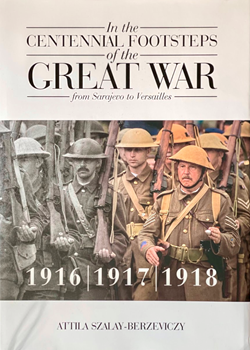
Author / Attila Szalay-Berzeviczy
Foreword / Dr Spencer Jones
Historical consultants / Dr Spencer Jones, Dr Ignác Romsics
Publisher / MCC Press, Budapest
Book and cover design / Zoltán Keczeli, Zoltán Dózsa
Hard cover / 558 pages with 980 full-colour photos
Product dimensions / 235 x 330 mm / 3.4 kg
ISBN 978-963-644-033-6
This comprehensive review of ‘In the Centennial Footsteps of the Great War: 1916, 1917, 1918, Volume 2’ by Attila Szalay-Berzeviczy will give readers a clear idea of what to expect from such a hefty tome.

To do so, after a broad introduction about what makes ‘In the Centennial Footsteps’ so important and special, we will dip into a few of the 33 chapters: Verdun, the Easter Rising, America enters the War, and the Sinai-Palestine Campaign. Like its sister publication, ‘In the Centennial Footsteps of the Great War’ provides a comprehensive illustrated narrative of the critical events and turning points of the First World War worldwide during 1916,1917, and 1918 from a unique contemporary perspective of the centennial years of 2014-2018. There’s an earlier review for ‘In the Centennial Footsteps of the Great War: 1914, 1915, Volume 1’.
The foreword by Dr. Spencer Jones provides a concise overview of the Great War from 1916 to 1918.
From the Western Front to Romania, Salonika, and the Arab Revolt, you will marvel at the opportunities to visit these locations today. You can see the memorials, cemeteries and monuments, artefacts and landscape features, information boards, memorial murals, historic vehicles, arms, trenches, and other remnants and learn how and whether the First World War is still commemorated or has been forgotten. Attila Szalay-Berzeviczy achieves a juxtaposition between then and now: the text explaining the war, the images showing how it is commemorated and memorialised, the monuments to the dead, the rows of headstones, and lists of names carved in stone.
Faced with the monumental task of narrating a world war through thousands of photographs taken at centennial events worldwide, one might expect a 21st-century approach like a website - Attila's decision to opt for the more challenging yet enduring medium of print publication is a testament to his dedication and the book's value.

He has achieved his goal of covering the vastness of the First World War centennial events by using his photographs to create the watershed from which the text flows.
Chronological Structure
‘In the Centennial Footsteps’ is well-organised. It follows a chronological timeline that performs a geographical dance around the globe as we learn of events from Africa to Asia and Europe on the Eastern and Western Front, in Salonika, and the Middle East, sometimes taking to the sea, at others to the skies. This structure allows readers to follow the war's progression and understand its global impact.
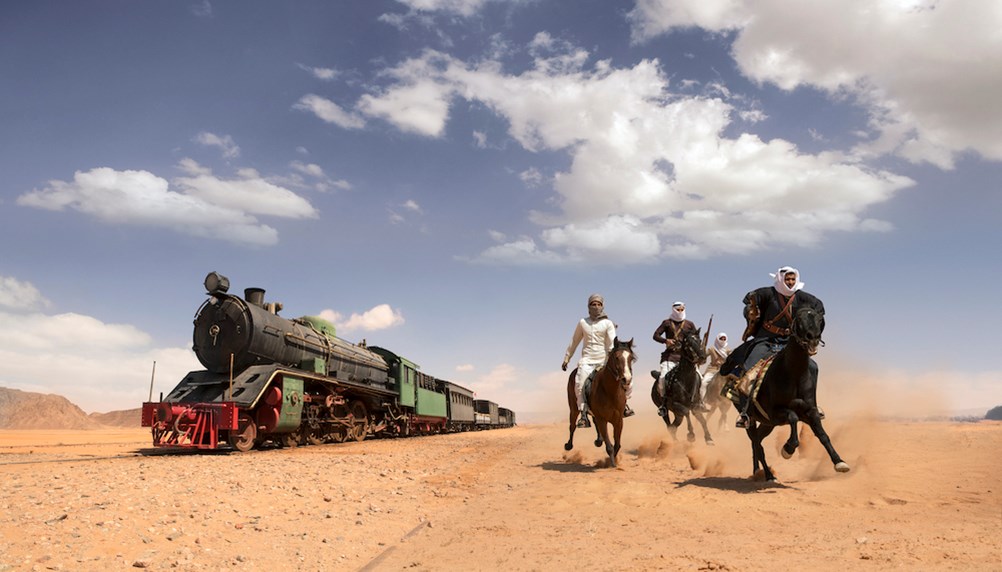
Contents
The contents are comprehensive:
Foreword of Dr. Spencer Jones
1916
War in German East Africa
The Battle of Verdun
The Easter Rising
Battles on the Italian Front
The Battle of Jutland
The Brusilov Offensive
The Battle of the Somme
Romania Enters the War
The Salonika Campaign
The Arab Revolt
Grieving Austria-Hungary
1917
America Enters the War
The Fall of Baghdad
The Nivelle Offensive
War in the Adriatic
War Above the Western Front
The Collapse of the Eastern Front
The Battle of Passchendaele
War in the Baltics
The Battle of Caporetto
The Sinai-Palestine Campaign
The Bolshevik Revolution
The Battle of Cambrai
1918
The German Spring Offensive
War in Persia and the Caucasus
The Fall of Damascus
The Liberation of Serbia
The Final Battles in Italy
The Hundred Days Offensive
The Armistice
The End of the Great War
Paris Peace Conference
Lest We Forget
Bibliography
Index
Acknowledgments
Maps
Detailed Accounts
‘In the Centennial Footsteps’ offers detailed yet succinct descriptions of the significant battles and events, providing a comprehensive understanding of the war’s dynamics. It is encyclopaedic in this respect, but this never takes away from its readability, as it uses individual military histories of battles, biographies, and memoirs.
Personal Narratives
‘In the Centennial Footsteps’ incorporates firsthand accounts from soldiers and civilians of the era and personal, contemporary stories, adding a human dimension to the historical events. For example, we are as likely to learn about a General commanding an army on the front line in 1917 as the gardeners of a memorial cemetery, the re-enactors, or regional politicians at events between 2014 and 2019.
Illustrations and Maps
‘In the Centennial Footsteps’ contains a variety of illustrations, maps, and photographs that enhance the reader's visualisation of the war's events and settings, such as cemeteries, gardeners, re-enactors, politicians, local people, memorials, monuments, gravestones, chapels, vistas, churches and chapels, and flags of every nation.
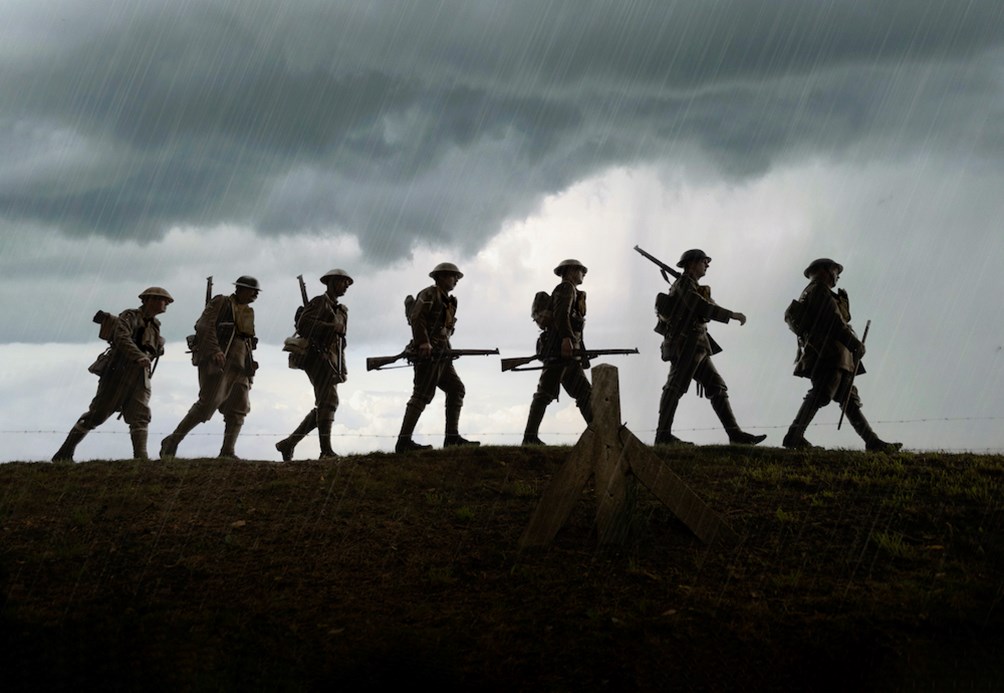
Analytical Insights
From a global perspective, ‘In the Centennial Footsteps’ provides an insightful analysis of the war's political, social, and economic impacts everywhere it has had impact. We find ourselves in Africa, Eastern Europe, and the Middle East, considering the events during the conflict, its aftermath, and the present day to reflect on how the First World War is remembered today.
Balanced Perspective
‘In Centennial Footsteps’ strives to present a balanced view, including perspectives from various sides involved in the war. This means British, French, and German. Belgian, American, Austrian, Turkish, Arab, African, and Romanian commemorations are also part of the story.
Educational Value
‘In the Centennial Footsteps’ is an excellent resource for students, educators, and history enthusiasts looking to deepen their understanding of the First World War. Each chapter is a solid stepping stone into that theatre of the war, with an eye on what can be seen in the ground today through cemeteries, memorials, and museums.
Comprehensive Coverage
Despite focusing on specific years, ‘In Centennial Footsteps’ gives a thorough overview of the war's broader context and lasting effects.
Readable Prose
The writing is accessible and engaging, making complex historical events understandable to a broad audience.
Chapter Two : The Battle of Verdun
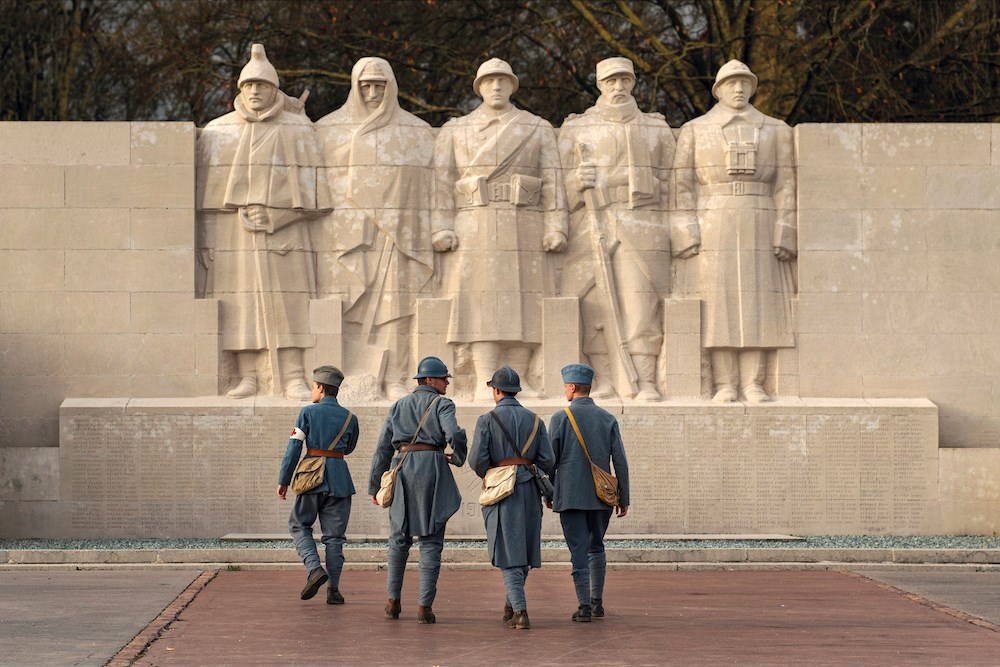
This chapter has four pages of text and is celebrated with 18 pages of contemporary photographs, which offer an incredible blend of photojournalism and art photography. The photographs cover the 100th anniversary of 29 May 2016, including re-enactors in their encampment and participating in the parade on 28 May 2016.
To the French, Verdun is what the Somme is to the British, and Gallipoli is to Australia and New Zealand.
We get a brief history of Verdun, from the Romans to the 1600s, to the Prussians and defeat in 1870-71. We also learn that Europe’s population increased from 180 million to 390 million over a few decades. It was Falkenhayn who decided on the tactic of causing crippling casualties to sap France’s will to fight. Many players' stories are told, and leadership is questioned, from Lt. Col. Emile Driant to Gen. Philippe Petain and Hindenburg.
We then learn of events since the First World War, from the reconstruction of Verdun from 1919 to 1929, its status as a place of pilgrimage for veterans and their families, the Élysée Treaty of Friendship of 22 January 1963, attended by German representatives, and the 1984 commemoration and phasing out of border checks to the commemorations over the centennial years 2014-2018.
La Voie Sacrée, the 64km road that carried a convoy of trucks, is an integral part of the story and somewhere to visit today, as are the Verdun memorials and museum. The Mémorial de Verdun is celebrated as one of the ‘world’s major war museums’. Joint commemorations continue annually.
Chapter Three : The Easter Rising
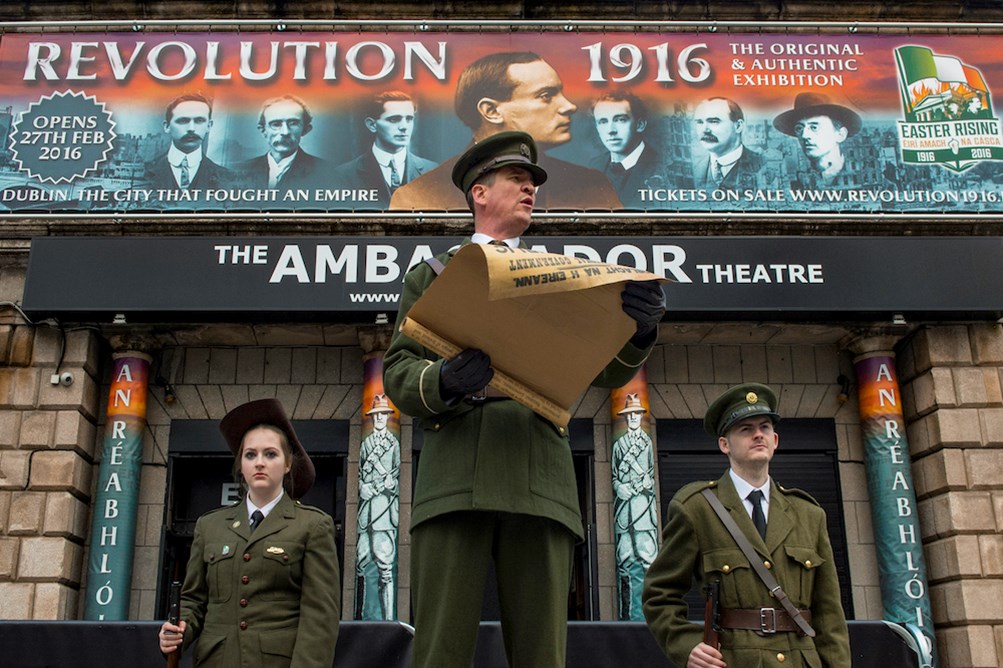
This chapter consists of five pages of text and five pages of contemporary photographs, such as those of the centenary commemorations on 27 March 2016, attended by thousands of members of the global Irish diaspora, and photos depicting commemorations around the General Post Office in Dublin on 24 April 2016.
To tell the story of Ireland and the East Rising, we go back to the early days of Christianity.
‘To understand the causes of the Easter Rising - one must first examine the troubled backdrop to the rebellion and go back a few centuries in Irish history,’ the chapter begins.
Christianity spread to Ireland in the 5th century from Roman Britain with St. Patrick to Vikings, Normans, and Pope Adrian IV. We learn of eight centuries of English rule over Ireland and the origins of the Irish green, orange, and white Tricolour.
The Easter Rising is an excellent example of a chapter that stands alone. It begins with a potted history of Ireland in the 5th Century. It brings us through conquest, domination, subjugation, famine, and rebellion, and via Home Rule, WWI, and Independence, with a current generation reflecting on the past and remembering its heroes while rooted in the present.
Chapter Twelve : America’s Entry into the War

This chapter comprises five pages of text and seven pages of contemporary photographs, including pictures of the National World War I Memorial in Pershing Park, the Arlington National Cemetery, and the Centenary Commission of the US Entry into the Great War in Kansas City (2017).
In the story of America's entry into the war, we visit the monumental National World War I Memorial in Washington, D.C. The US, unlike its European counterparts, has been slow in producing a fitting national memorial to the 4.7 million Americans who served during World War One. It wasn’t until December 2014 that Congress authorised the World War I Commission to build the National World War Memorial in Persian Park. Construction was delayed until December 2019 and was further challenged during the COVID-19 pandemic due to supply chain labour and safety challenges. It wasn’t until the 16th of April 2021 that the commission and the Doughboy Foundation raised the American flag over the newly constructed memorial for the first time. The 58-foot-long bronze bas-relief entitled ‘Soldiers Journey’ will finally be officially unveiled in Pershing Park on 13 September 2024 and will serve as the National World War I Memorial centrepiece in Washington, D.C. With a nod to the bugler at the Menin Gate, a bugler plays every evening at 5 p.m. to inspire us to learn and reflect on how the war changed the US.
America was isolationist during the Great War; it took President Roosevelt's ‘Preparedness Movement’ to prepare for war. He funded training camps where 40,000 college graduates learned to march in close order, fight, and shoot.
The buildup to America’s entry and the war includes the economic growth industrialisation to serve the war, the massive loans to Britain and France and then the propaganda about the bombardment of civilians, the loss first of the RMS Lusitania in May 1915 and then a few months later, the S.S. Arabic. We then move into unrestricted submarine warfare, which concludes with the story of the infamous Zimmerman telegram of 16 January 1917.
The Zimmermann Telegram was a secret message sent by Germany to Mexico in January 1917, proposing a military alliance against the United States if it entered World War I. Its interception and publication by the British helped sway American public opinion, leading to the U.S. joining the war against Germany. The telegram significantly impacted the war's course and marked a turning point in U.S. foreign policy.
Action and reaction to unrestricted submarine warfare saw the birth of the convoy system.
Chapter Twenty-One : The Sinai-Palestine Campaign
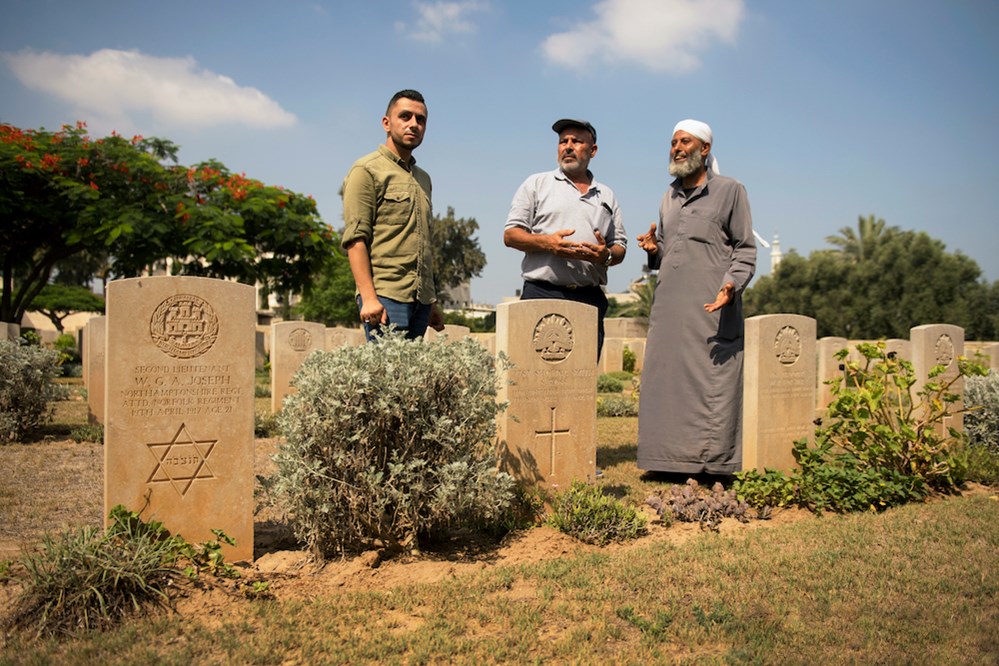
This chapter is introduced over five pages of text and celebrated in nine pages of contemporary photographs from a stone tablet in English, Arabic and Hebrew at the entrance to the Gaza War Cemetery to the Allied Fallen to modern-day protests at the centenary of the ‘Balfour Declaration’ to Israeli Prime Minister Benjamin Netanyahu talking of ANZAC troops who ‘liberated the Holy Land, ending 400 years of the Ottoman Empire’ followed by centenary images relating to the ‘Fall of Jerusalem’ and a re-enactment of the attack y the New Zealand Mounted Rifles.
The formation of the Jewish State
We learn that the earliest seeds of the idea of a Jewish State can be traced back to the infamous Dreyfus Affair (1894-1899), a political scandal in France. Alfred Dreyfus, a Jewish army officer, was falsely accused of spying for Germany and was convicted in a flawed trial. The case divided the nation, exposing deep-seated anti-Semitism, military corruption, and injustice. Though Dreyfus was ultimately exonerated, the affair had a lasting impact on French society and politics.
Theodor Herzl, a Jewish journalist who covered the Dreyfus Affair for the Viennese Neue Freie Presse, concluded that covering European assimilation was impossible under such conditions. In his landmark 1895 book, The Jewish State, Herzl argued for establishing a Jewish homeland in Palestine.
The Defence of Suez
Twenty years later, during World War I, the British were defending the Suez Canal—a crucial route for trade and military movements in the British Empire—from their positions on the western bank. In 1916, the newly appointed commander of the Egyptian Expeditionary Force (EEF), Lieutenant General Archibald Murray, advocated for an offensive to seize the Sinai Peninsula from the Ottomans and to open another front against them in the Eastern Mediterranean.
The EEF included troops from Britain, Australia, New Zealand, and the British West Indies (Jamaica, Bermuda, Barbados, etc.). After the battles of Romani (August 1916) and Rafa (December 1916), plans were laid to capture Jerusalem. Standing in their way was Gaza, fiercely defended by German Colonel Friedrich Kress von Kressenstein, who oversaw the Ottoman 4th Army. The British launched a series of attacks, including naval bombardments and air assaults, which eventually led to the fall of Jerusalem on 9 December 1917 and initiated three decades of British control over the region.
The Balfour Declaration
This victory coincided with the issuance of the Balfour Declaration on 2 November 1917, which expressed support for "the establishment in Palestine of a national home for the Jewish people" while also asserting that "nothing shall be done which may prejudice the civil and religious rights of existing non-Jewish communities in Palestine."
The Balfour Declaration's impact is still felt in the Middle East today. On its centenary, Jews worldwide viewed it as the foundation of their sovereign homeland. At the same time, Palestinians saw it as a betrayal by an imperial power that promised their land to other people.
‘A century on, these bitter emotions continue to fuel seemingly endless violence in the Holy Land’. (p.347).
Connecting the two World Wars, one of the last photographs shows the Guards Division War Memorial from the First World War with its five life-size bronze figures. It was damaged in a German bombing raid over London in the Second World War - it has not been repaired.
Conclusion
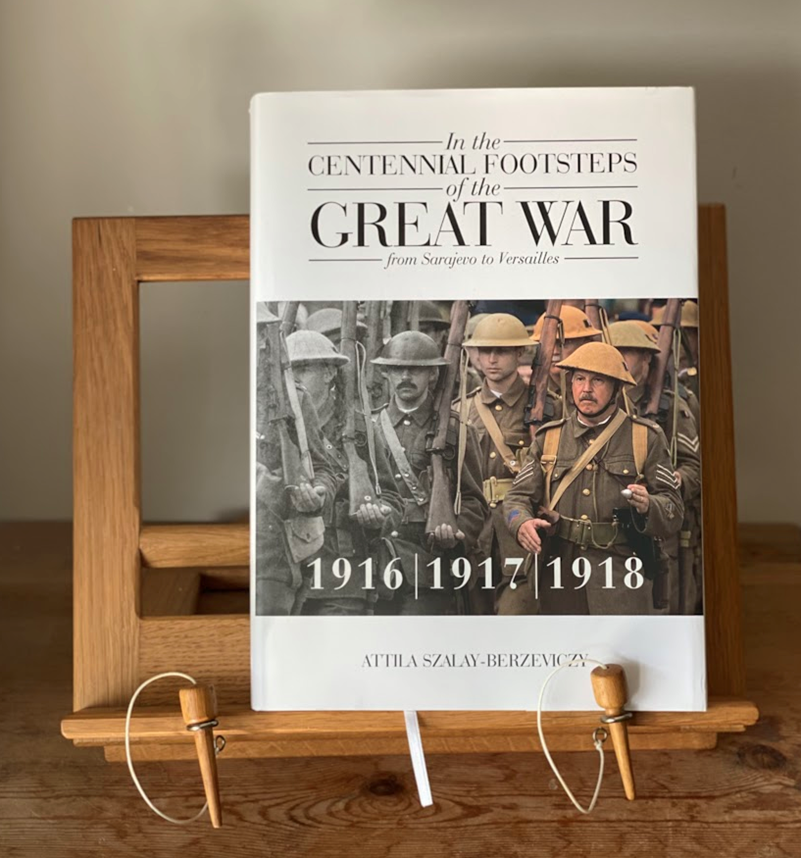
‘In the Centennial Footsteps of the Great War: 1916, 1917, 1918, Volume 2’ by Attila Szalay-Berzeviczy is more than just an historical account; it is a profound journey through the pivotal years of World War I, offering readers a rare blend of narrative, personal testimonies, and visual storytelling. This volume not only vividly brings the events of 1916 to 1918 to life but also connects them to the centennial commemorations, demonstrating how the legacy of the Great War continues to shape our world today.
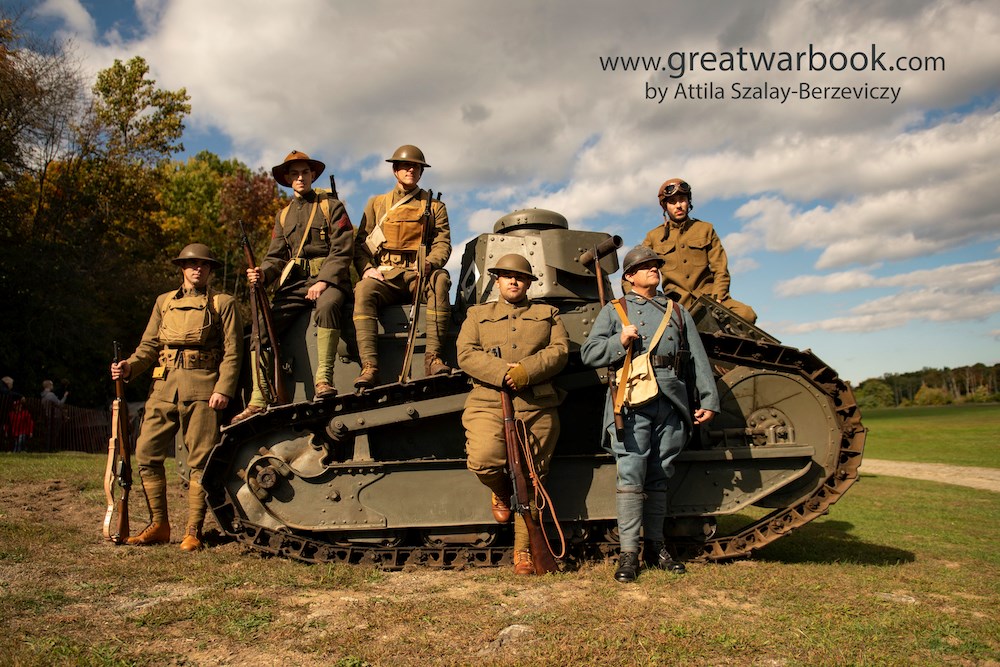
Through its chronological structure, detailed accounts, and rich illustrations, the book captures the global scope of the conflict while providing deep insights into the experiences of those who lived through it. Szalay-Berzeviczy's decision to present this history through print rather than digital media underscores the enduring value of tangible documentation in preserving collective memory.
Whether you are a student, educator, history enthusiast, or someone looking to understand the Great War's impact on the present, this volume offers a comprehensive and engaging resource. Its balanced perspective, combined with personal narratives and analytical insights, ensures that readers gain a holistic understanding of the war's complexities and its lasting consequences.
In sum, this second volume is a significant contribution to Great War historiography, deserving of a place on the bookshelf of anyone seeking to explore the intricate tapestry of history that continues to influence global affairs a century later.
Reviews
‘A splendid book with balanced and informative text, and the photographs are magnificent - a visual treat’ Prof. Gary Sheffield: historian and author.
‘This book takes pride of place on my already groaning bookshelves as a unique piece of Great War historiography’. Andrew Robertshaw. Military Historian and Author.
Attila Szalay-Berzeviczy talks about In the Centennial Footsteps to Tom Thorpe in this Mentioned in Dispatches podcast > Ep.261a - In the Centennial Footsteps of the Great War
This is where you can purchase In the Centennial Footsteps.

Review by Jonathan Vernon, Digital Editor.





